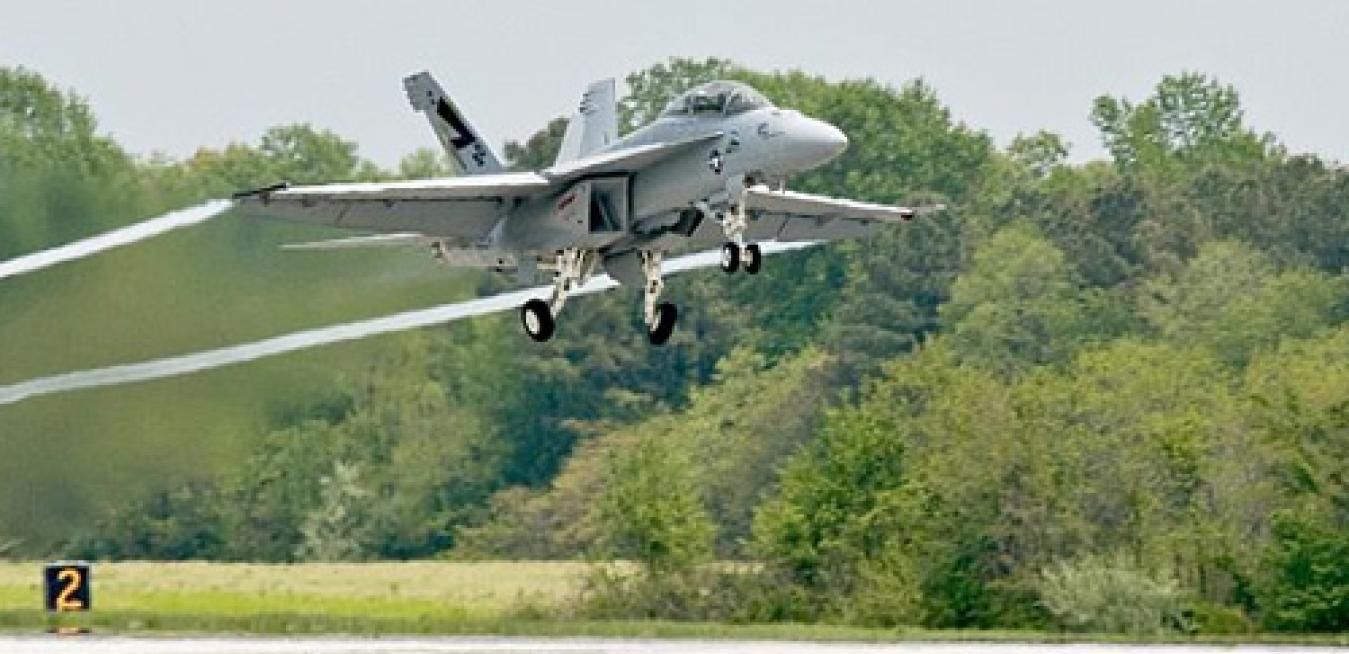Pond scum, grass clippings and old T-shirts may not seem to be terribly appetizing topics, but they are providing food for thought as alternative energy sources that can power today’s United States military aircraft and support broader military strategy aimed at fuel independence. GE F414 engines are at the front line, having powered the Boeing F/A-18 “Green Hornet” on its initial biofuel-powered flight yesterday — the first Naval fighter to be powered by a biofuel blend. The Navy noted that the F414 engine performed as expected during the 45-minute flight — and indicated “the aircraft did not know the difference between the bioblend and its traditional fuel source.”
In addition to environmental stewardship, biofuel blends of petroleum and non-petroleum sources can offer significant advantages. Designed to be “drop in” replacements, their physical and chemical properties are similar, if not identical, to conventional fuels they replace. As a result, customers do not necessarily need to spend time or money making costly aircraft modifications. Applied to today’s aircraft, the ‘Green Hornet’ initiative can increase capability by reducing reliance on fossil fuels from foreign sources and reducing volatility associated with long fuel supply transport lines.
In addition to helping the Navy meet its goal of deriving half its energy needs from alternative sources by 2020, the F404/F414 program is proceeding with an eye on green on several other fronts. New technologies could help reduce specific fuel consumption (SFC) for the Navy’s F/A-18E/F Super Hornet fleet by 3 percent and save two million gallons annually – the equivalent of driving your car around the world about 1,200 times if it got 20 miles to the gallon.
GE is also developing a noise reduction kit for the F414 using a chevron exhaust nozzle. These nozzles have serrated edges where each “lobe” penetrates into or out of the primary flow and generates a secondary flow, significantly reducing jet noise. Testing has shown a 2-3- decibel reduction, which is equivalent to turning off one of the F/A-18’s two engines.
I’m glad to be a part of this exciting transformation … and I may think twice before discarding all of my old concert T-shirts!





